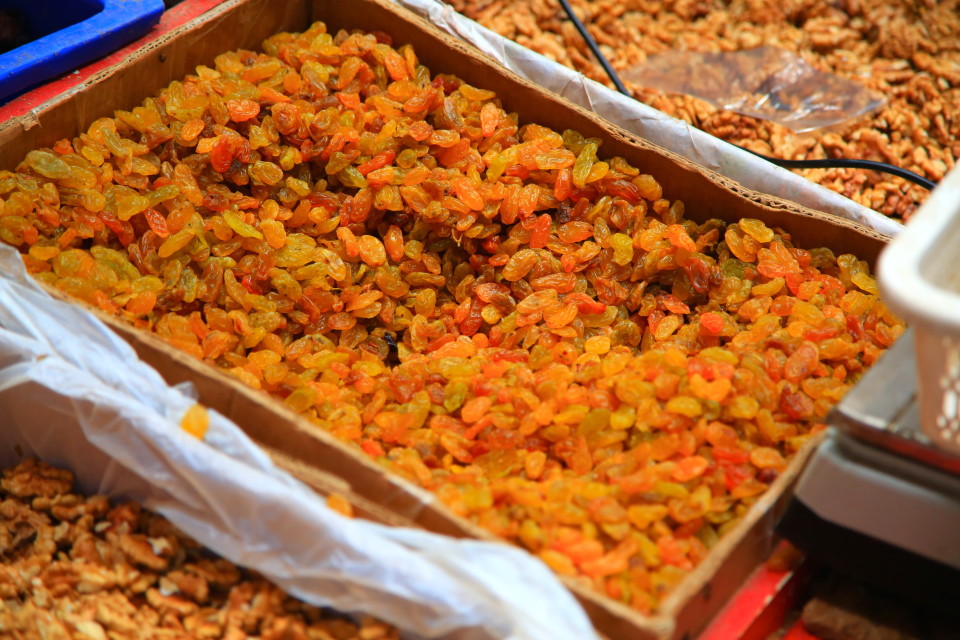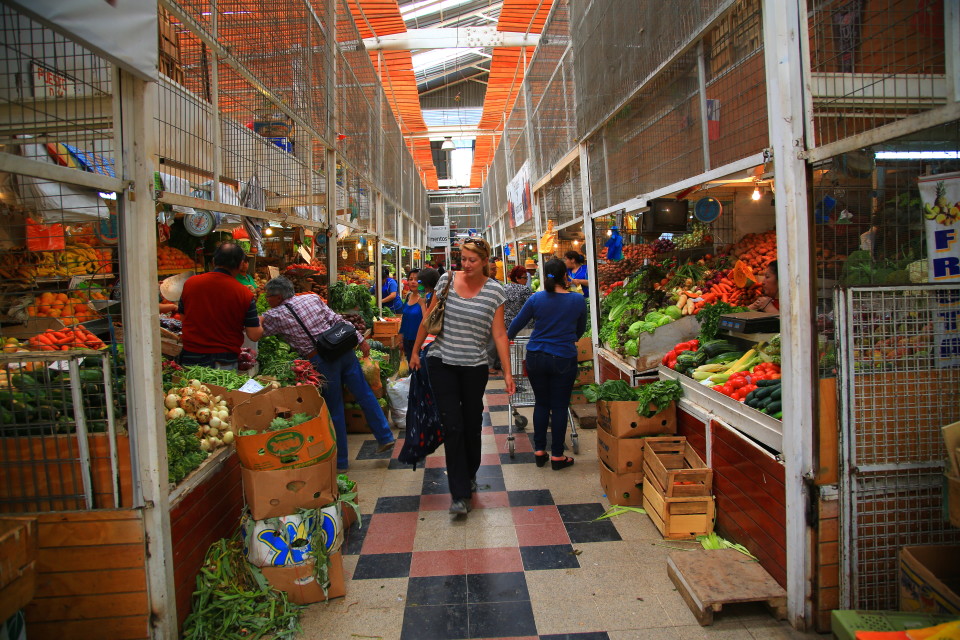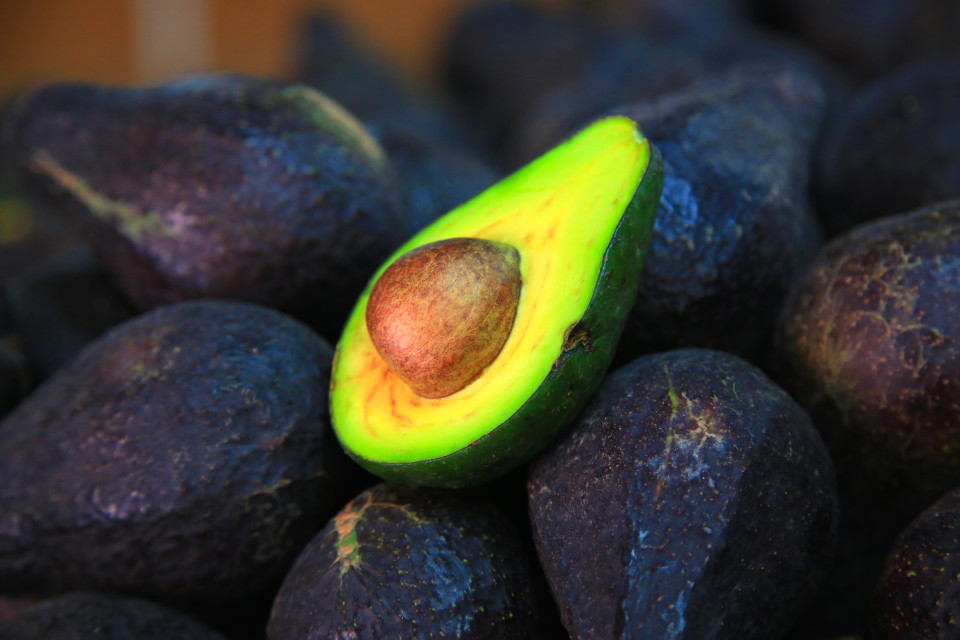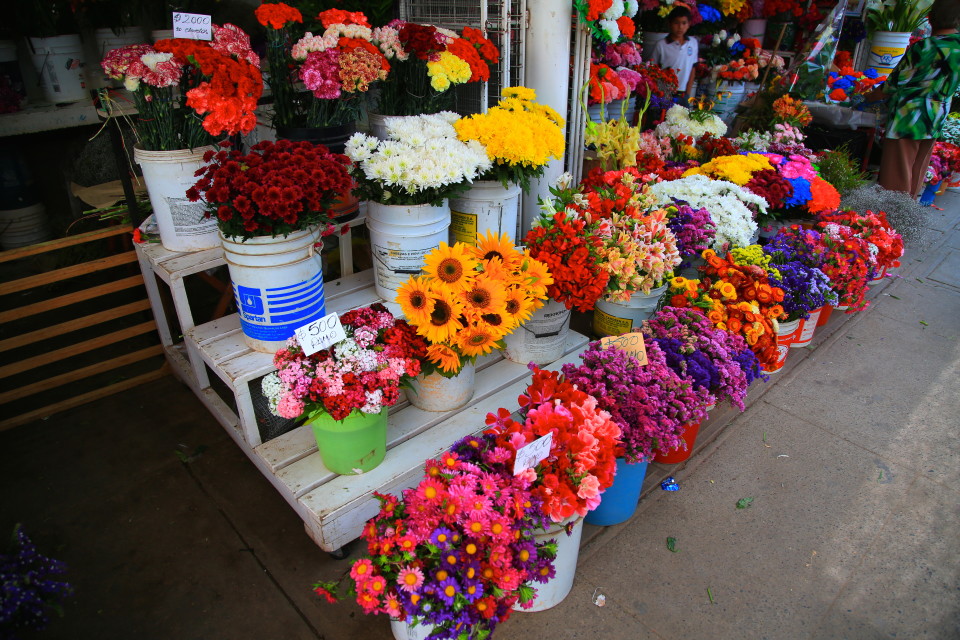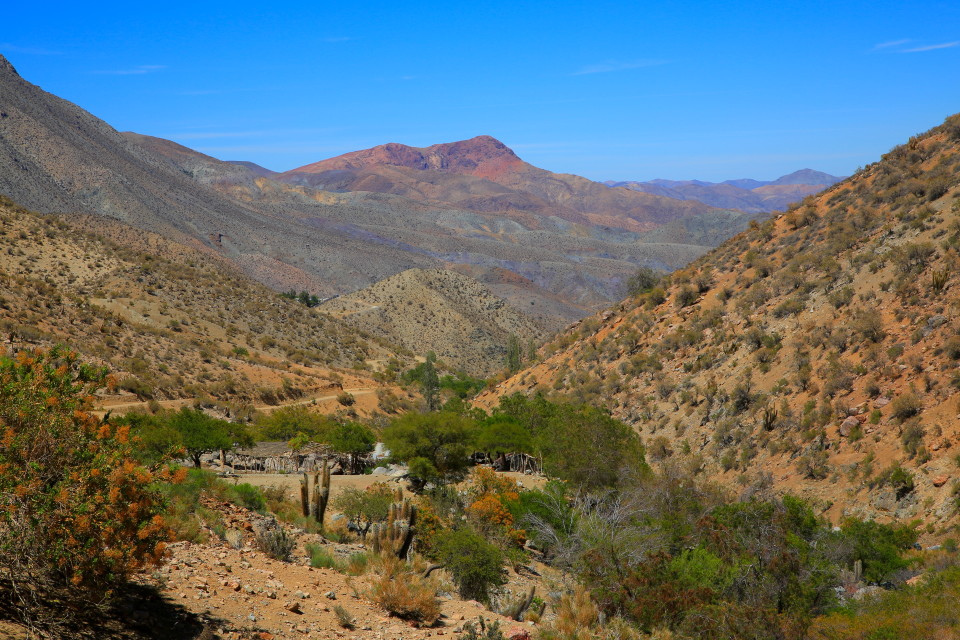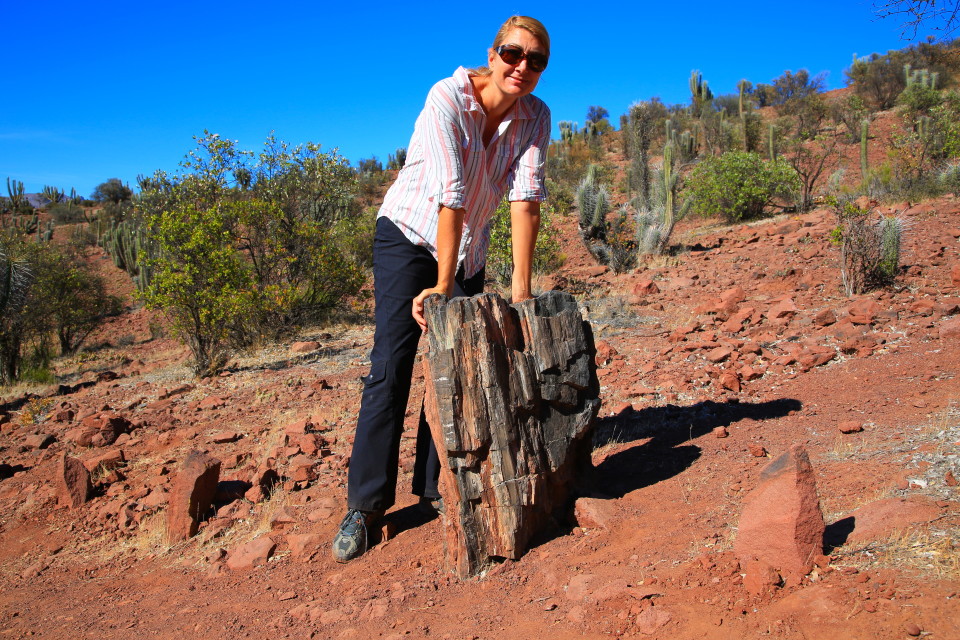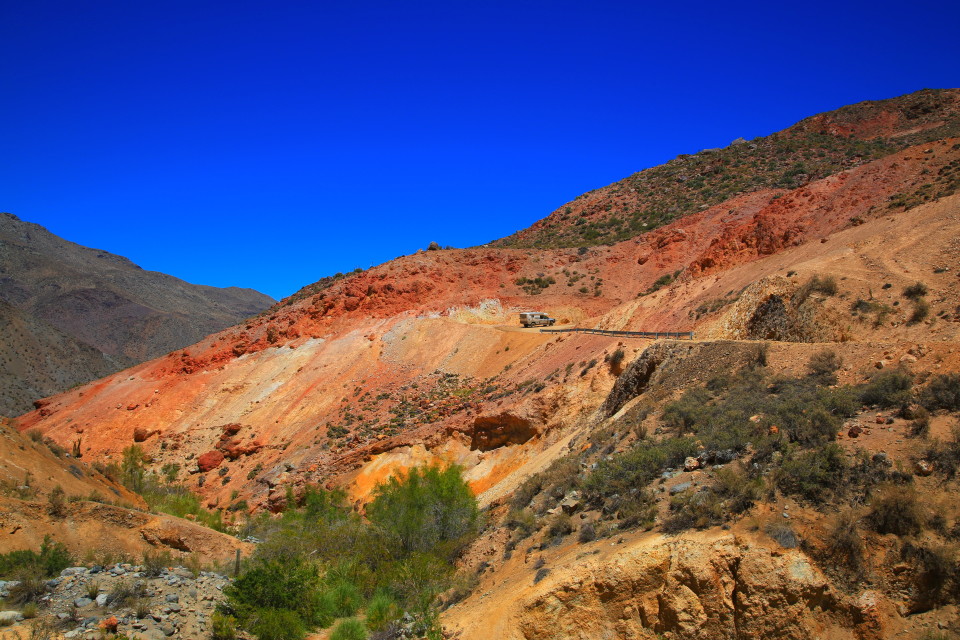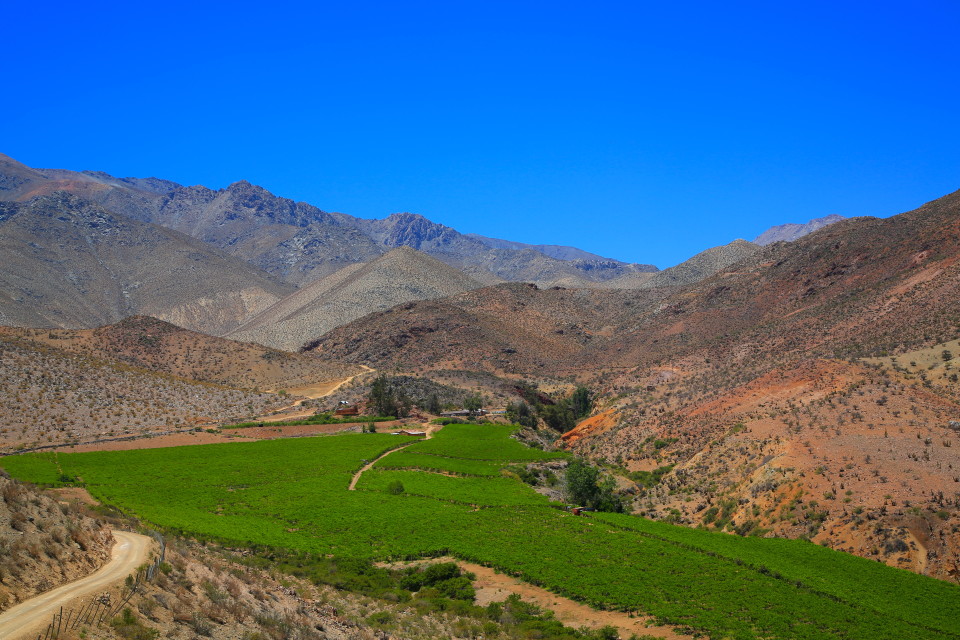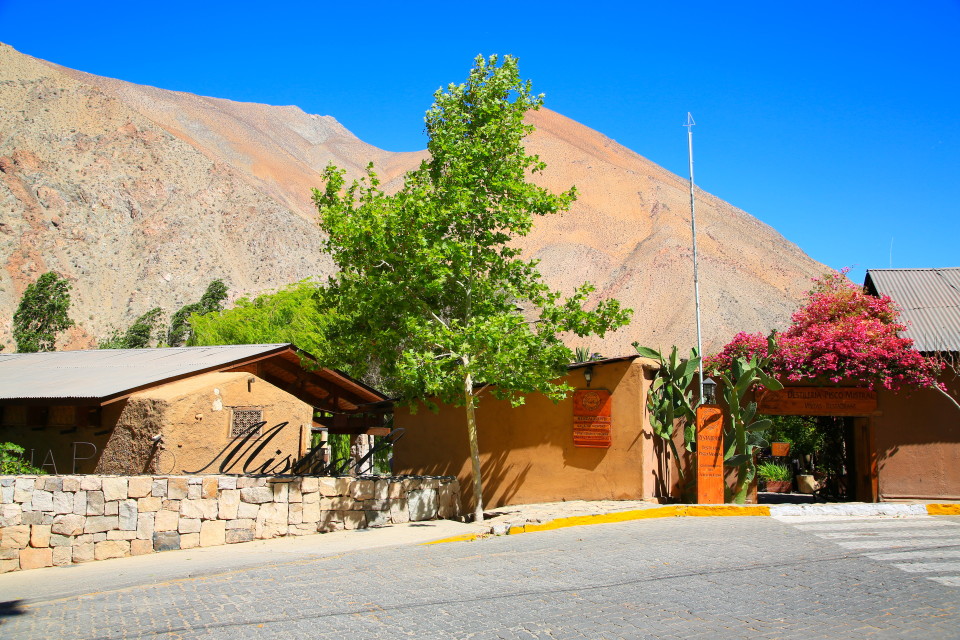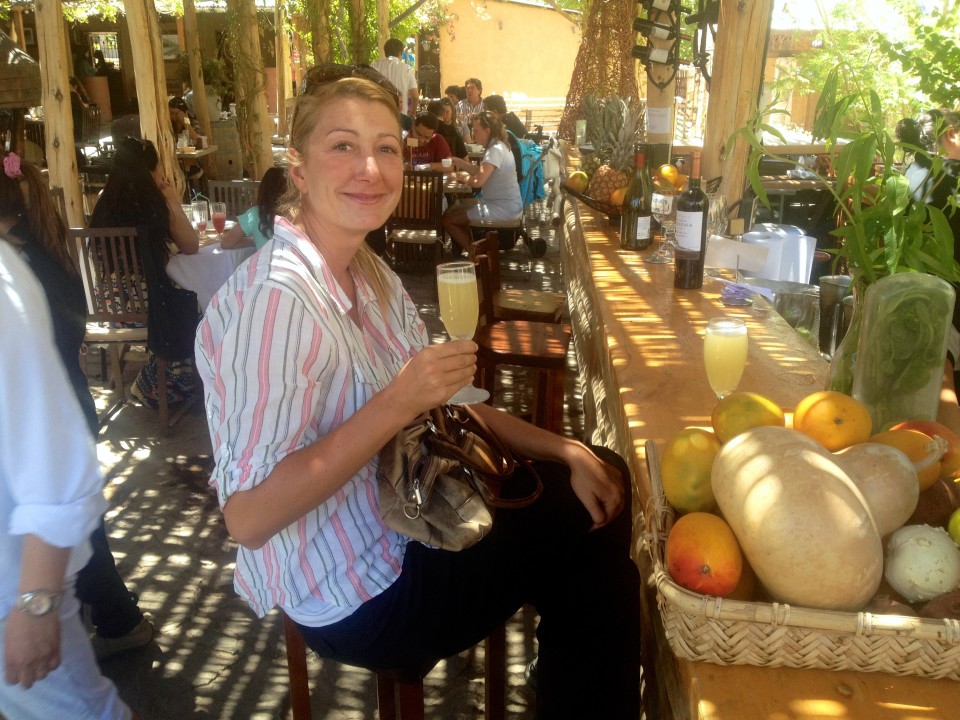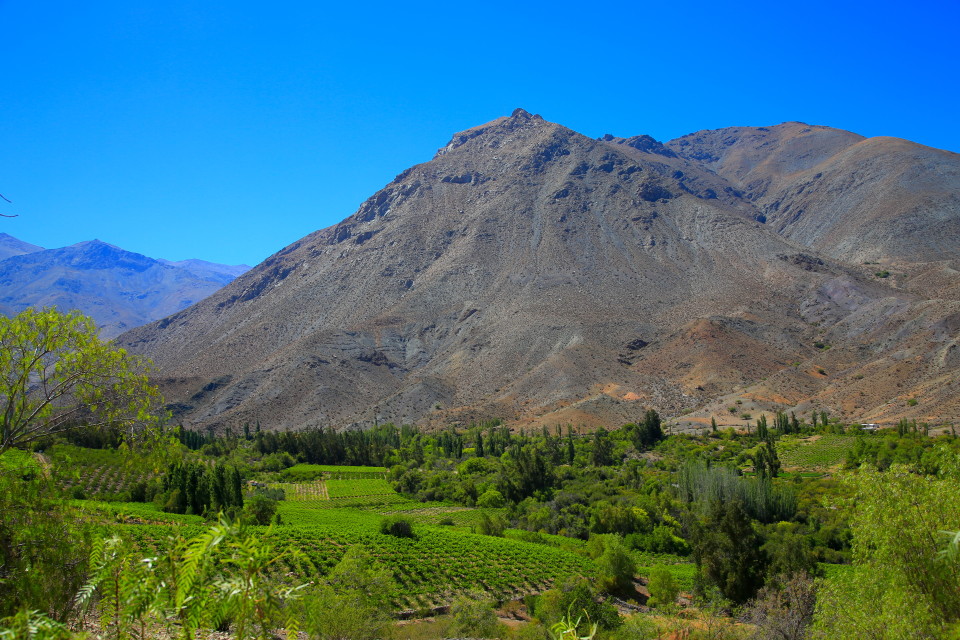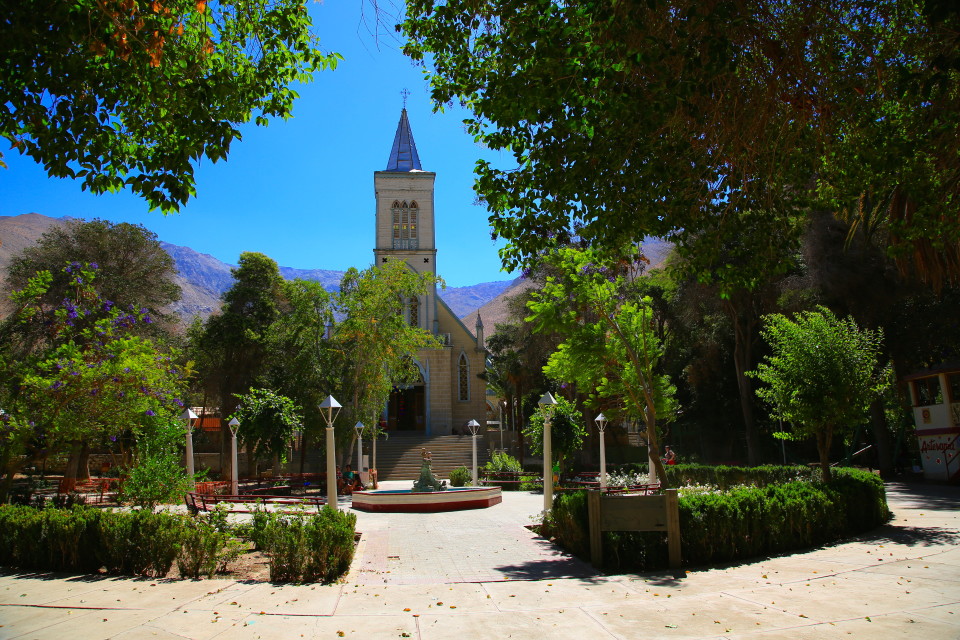The more time we were spending in Chile, the more I kept feeling the parallels with my home state of California. They both have a long rugged coast along the Pacific ocean. They are both mostly deserts, saved by water that runs down from the snowy mountains along their borders that creates these lush, fertile valleys where fruit and vegetables grow in abundance it what otherwise seems like a barren land. And then there is the wine…..
Driving out of the Atacama and into the fertile valleys south of the desert, I felt like I was driving into the more remote parts of Sonoma Valley, where there is scorching heat, dry land and grape vines as far as the eye could see. The grape vines really reminded me of home and were a nice change from weeks of barren desert landscape, so we randomly decided we were going to spend four or five days driving a loop around this area visiting fruit markets, pisco wineries and observatories (and do some off roading on some dirt roads I found on the map).
The Elqui and Hurtado Valleys don’t just have grapes, they are also part of the Ruta de Estrella Route of stars (Chile does a great job giving routes romantic names on their road signs). This area is through part of the southern Atacama, where the skies are some of the clearest in the world and the area is packed with international observatories, most for research and a few for public viewing.
We started our loop at the small town of Ovalle where Monday, Wednesday and Friday they have the largest fresh produce market in Northern Chile. We stocked up on homemade olives, fresh made goat and cow cheese and pickled vegetables (which we found all over Chile), dried fruit and nuts, and bags and bags of fruit and veggies. For the first time in ages I was eating cherries, apricots and strawberries again. It was early summer in Chile, and there was a wonderful abundance of our favorite fruits in season.
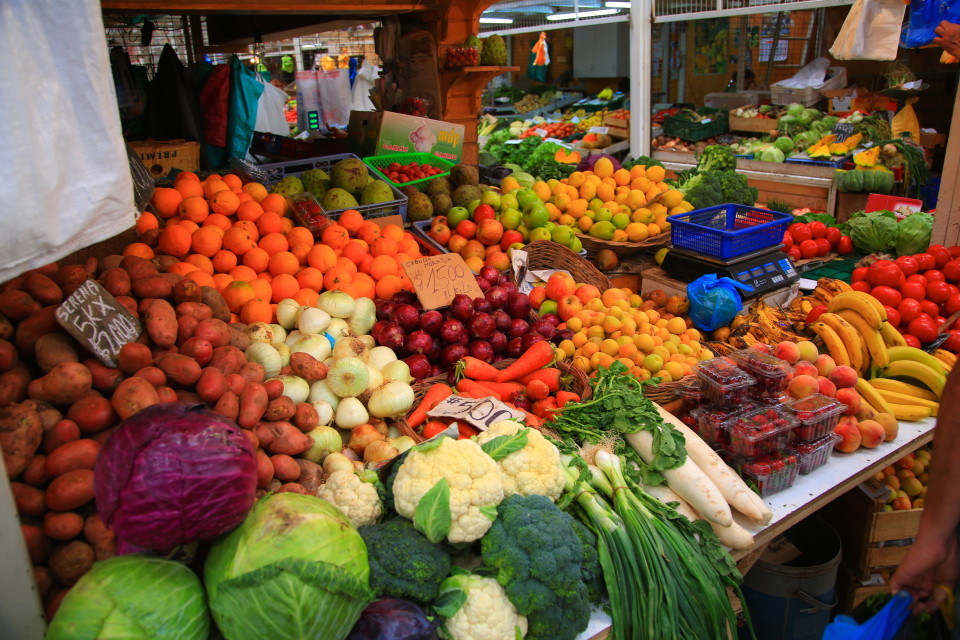
This was the first time we had seen lemons since the United States. I filled bags and bags with all this goodness.
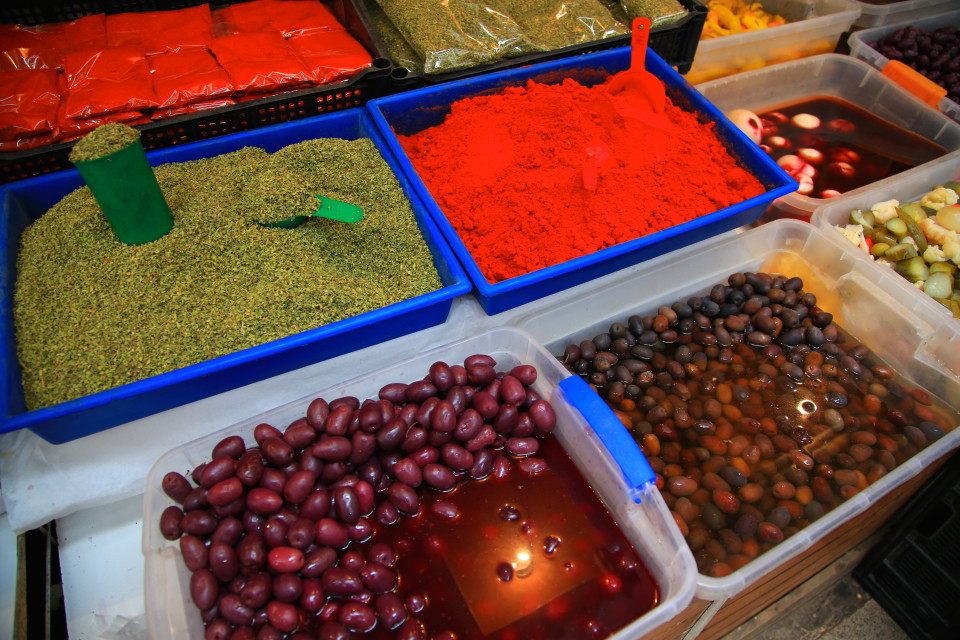
Chile has lots of olives and pickled veggies. The veggies are also often brined in salt instead of vinegar which became my favorite snack in Chile, but they are not for people on a low salt diet!
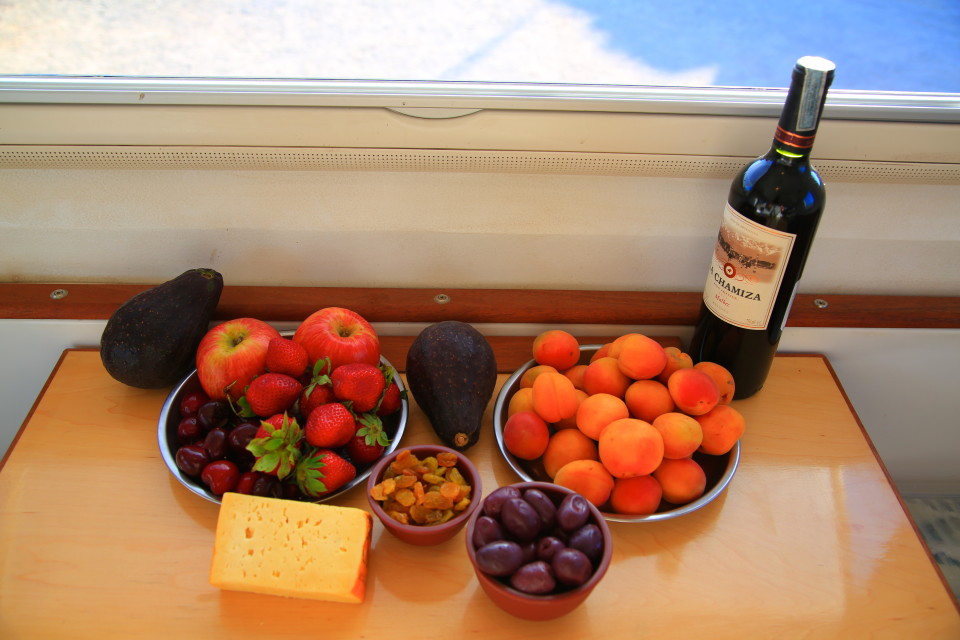
XP dinner post market. This is how we would eat for days, I think our bodies were craving fruits and veggies after so much pasta and canned food in Bolivia. And yes, the wine is Argentinian, it was left over from Bolivia. After that bottle it was only Chilean wine in Chile and only Argentinian wine in Argentina.
From Ovalle we decided to take tiny dirt back roads through the Hurtado Valley to a mountain pass towards the town of Vicuna. There are tons of back roads here that are fun to explore and great wild camping options for star gazing.
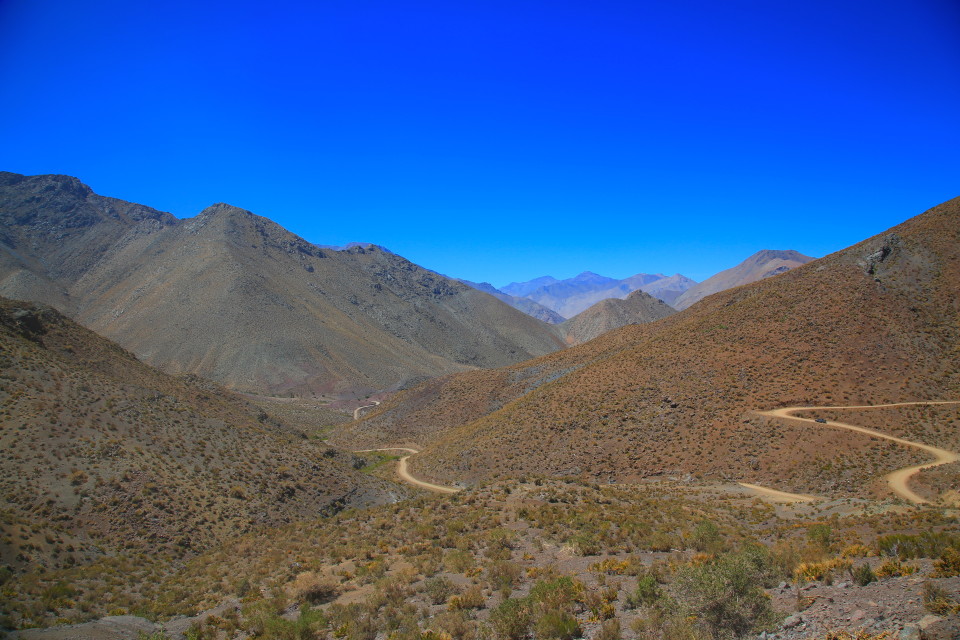
I love just seeing nothing but dirt roads. This is when we blast the music and enjoy the feeling of being in the middle of nowhere.
On the way to Vicuna we read about Monumento Natural Pichasca in our guide book. The book described it as a nature reserve with huge pieces of petrified wood in a beautiful desert and caves inhabited 10,000 years ago, it sounded interesting. The good news is the park ranger let us camp for free, the bad news was this:
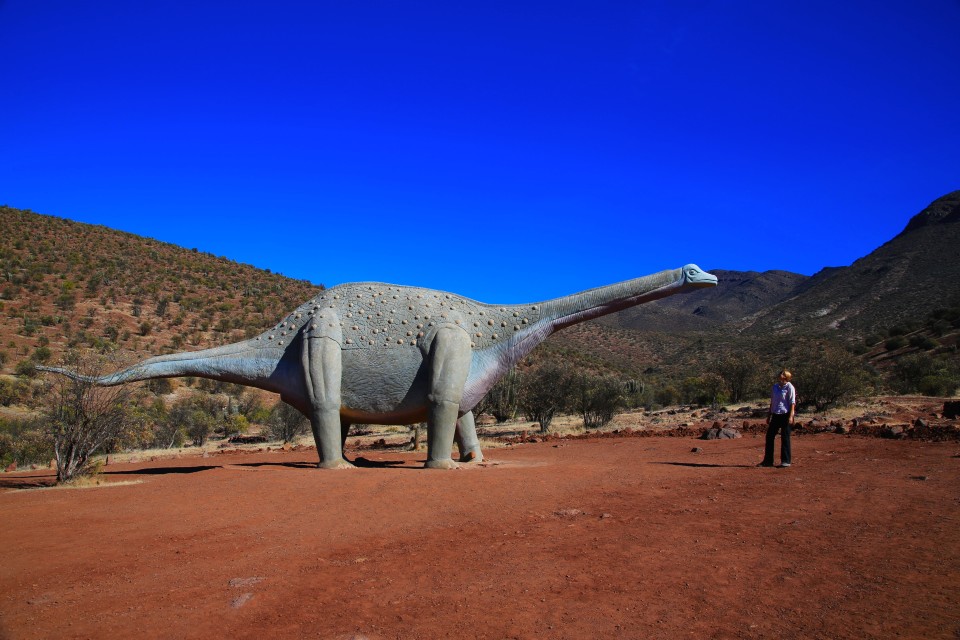
I don’t even know what to say about this….. The cave almost topped this with fake plastic neanderthal men in it around a fire pit. Not really the nature reserve I had imagined. But it was just a stop over for the night, so no harm and we had a few good laughs.
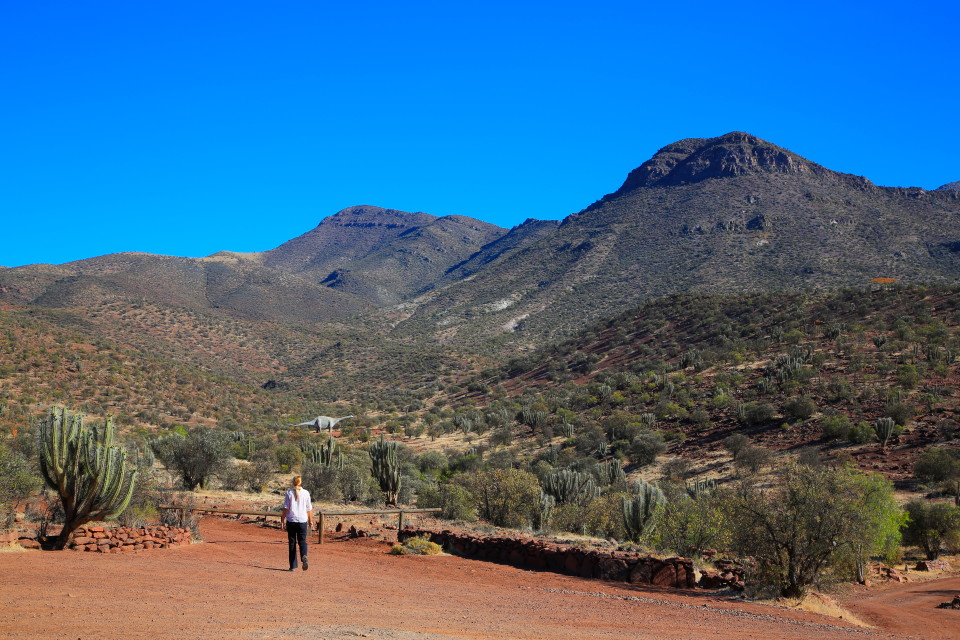
We were totally alone in the park, and my only regret is that I did not get up on the back of the dinosaur for a few fun photos.
The next day we drove through some really colorful scenery and as we got closer to the Elqui Valley we started to see our first signs of the famous pisco grapes.
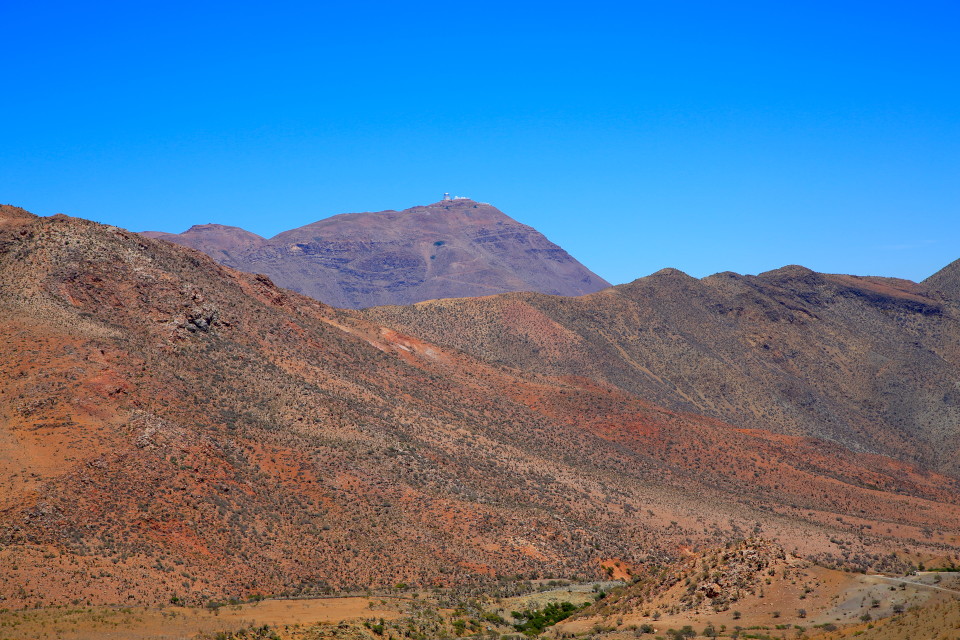
You can see an observatory on the far mountain peak. We saw many on our drive and wished that they were open to the public,
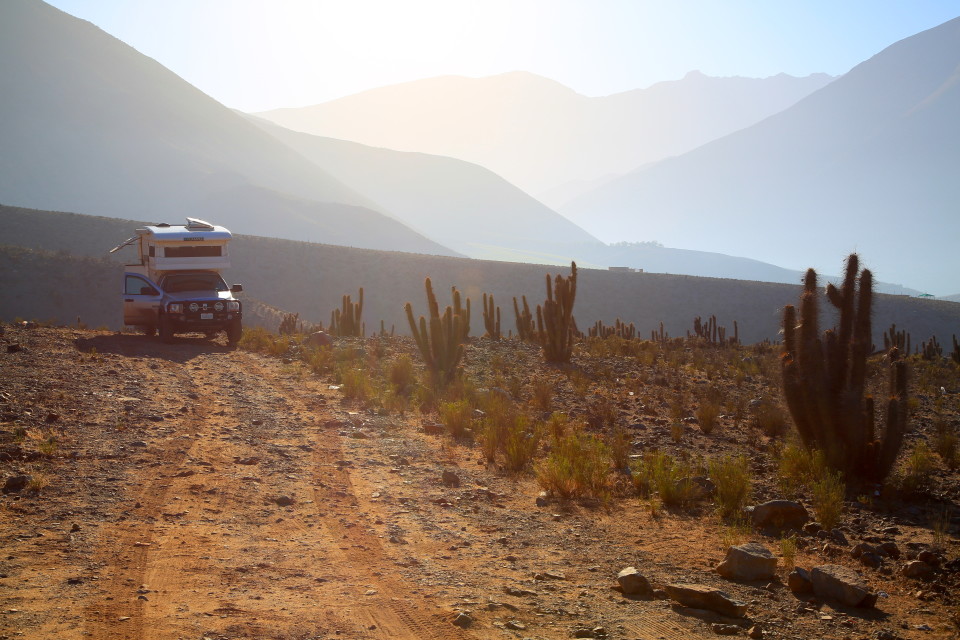
The great thing about Chile is it is so easy to wild camp and not once has anyone ever bothered us. Chileans are very private and always just wave and smile if they happen to pass us wild camping, but they never stop to chat. It is a totally different world from Colombia where we never stopped meeting new people as curiosity drew them to us like a moth to the flame.

We camped one night near the Mamalluca Observetory near Vicuna (one that is opened to the public) and woke up in the morning to the entire valley covered in mist.

While wild camping, if you chose to use nature as your bathroom, be careful. We stopped our drive for a bathroom break and I accidentally got a little too close to this cactus. Ouch.
From Vicuna, we headed into the Elqui Valley to try some Chilean pisco. I always associated pisco and pisco sours with Peru, and apparently this is a bit of a hot point if you bring it up with the right person in Chile. Chile also claims it as their national drink, and we thought we would have to go to the quaint little town of Pisco Elqui to come up with our own opinion. The town was actually La Union until the Chilean President changed the name to Pisco Elqui in 1939 so Peru could not gain exclusive rights to the pisco name for the drink. Pisco Elqui has the oldest pisco distillery in Chile, and is at the end of the stunning valley with the same name so we decided to give it a try.
The town was really cute with its wooden church and palm lined town square and the distillery was as fancy as anything you would find in Napa Valley, with Napa Valley prices for the food and drinks to match. We settled in at a patio table covered in boganvilla to try some pisco sours.
I hate to say it, but I prefer the Pueruvian version. All the pisco sours I had in Chile were much too sweet for my taste, I preferred the limey, sour, frothy ones we drank in Peru. The one thing Chile does have on Peru is if you have any desire to drink pisco straight, the Chilean Tres Erres brand you can buy at Mistral is good plain if it’s ice cold and tastes a bit like grappa with a nice fruity finish. I found the Peruvian was a bit more like vodka straight.
After pisco tasting we chose to drive to a small observatory in the middle of nowhere to see the stars. We read it was one of the better ones open to the public for star gazing called Cruz del Sur obsevetory. Of course, the night we arrived after hours of driving more dirt roads the sky was full of clouds for the first time in weeks, so we never got to see the stars through a telescope, but there was so many stars to watch just camping in the wild, it is hard for me to feel let down.














